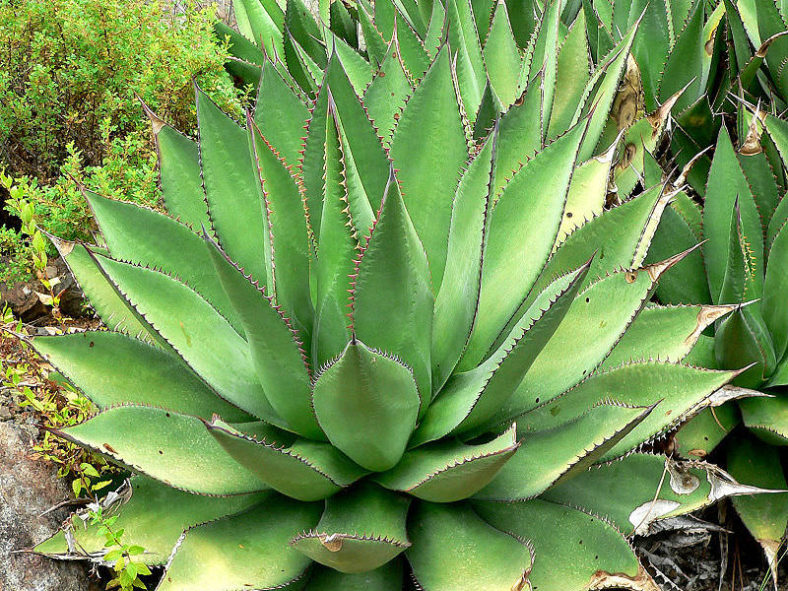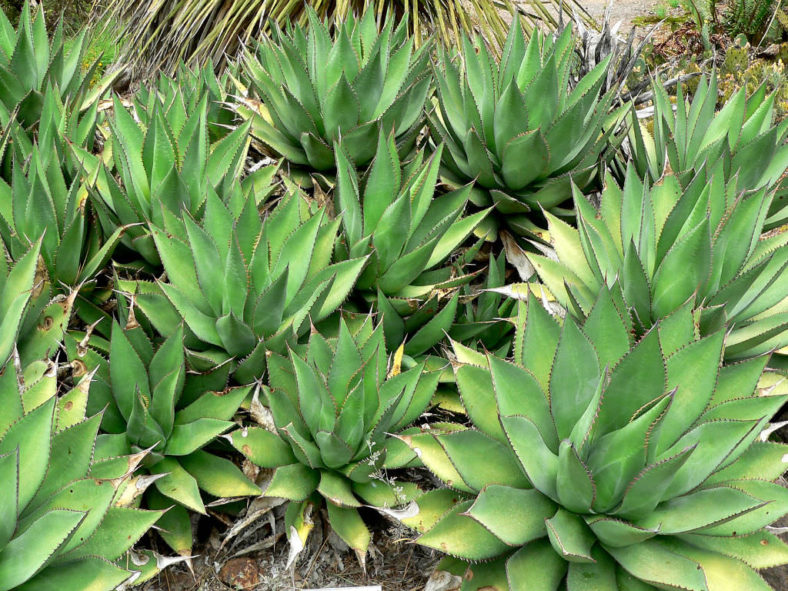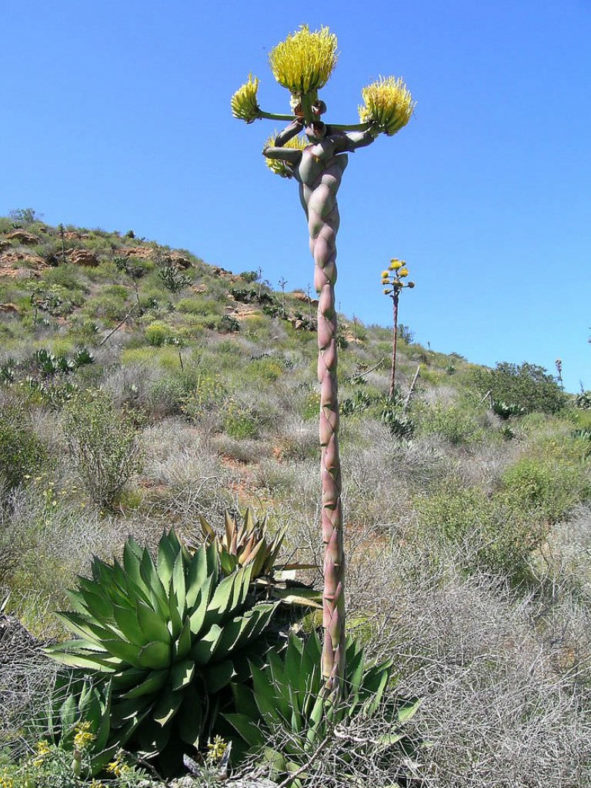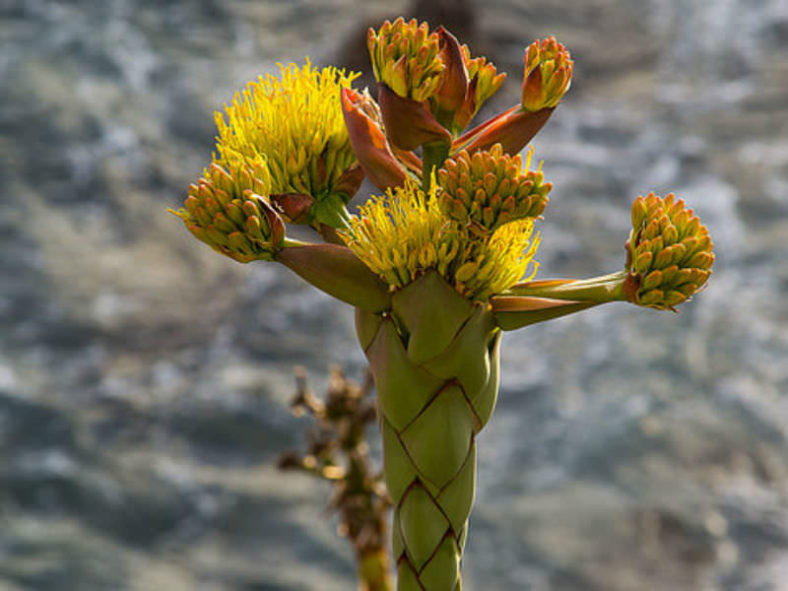Scientific Name
Agave shawii Engelm.
Common Name(s)
Coastal Agave, Shaw's Agave
Synonym(s)
Agave orcuttiana
Scientific Classification
Family: Asparagaceae
Subfamily: Agavoideae
Genus: Agave
Etymology
The specific epithet "shawii" (pronounced "SHAW-ee-eye") honors Henry Shaw (1800-1889), an English-born American businessman, philanthropist, amateur botanist, and founder of the Missouri Botanical Garden in St. Louis, Missouri.
Origin
Agave shawii is native to California's coastal sage and chaparral habitats, along the Pacific Coast in the northern Baja California state of Mexico and southwesternmost San Diego County, California, United States.
Description
Agave shawii is a succulent plant that forms rosettes of green, narrow-ovate leaves with a variable pattern of red, sharp marginal teeth and a stiff terminal spine. The rosettes can grow up to 3 feet (90 cm) tall and up to 4 feet (1.2 m) in diameter, while the leaves can measure up to 20 inches (50 cm) in length and up to 8 inches (20 cm) in width.
The panicle-like inflorescence can grow up to 13 feet (4 m) tall and 8 to 14 lateral flower clusters subtended by large, purple bracts. Each cluster consists of a mass of yellowish or reddish flowers. This plant generally blooms from late winter to early summer, and, as is typical for Agave, the rosette dies after that but produces numerous offsets, forming a large colony.

Hardiness
USDA hardiness zones 9b to 11b: from 25°F (-3.9°C) to 50°F (10°C).
How to Grow and Care
Agaves are not difficult plants to grow. They're slow-growing and dramatic and will even thrive on a bit of neglect. If you're the type of person who likes to fuss with houseplants and water a lot, Agave is probably not the plant for you. On the other hand, if you're the type of person who likes to set it and forget it, and you have a sunny window, Agave might be the way to go. Be aware that some large varieties will eventually outgrow your room (unless you have a large greenhouse), and Agave can be aggressive. They have irritating sap and sometimes very sharp thorns that can injure small children and even pets.
In general, Agaves do not need to be repotted every year. Most species commonly found in cultivation grow very slowly and take a long time to outgrow their pot. It's also best to handle your Agave as little as possible since they do not like to be disturbed.
See more at How to Grow and Care for Agave.
Links
- Back to genus Agave
- Succupedia: Browse succulents by Scientific Name, Common Name, Genus, Family, USDA Hardiness Zone, Origin, or cacti by Genus
Photo Gallery
Click on a photo to see a larger version.


